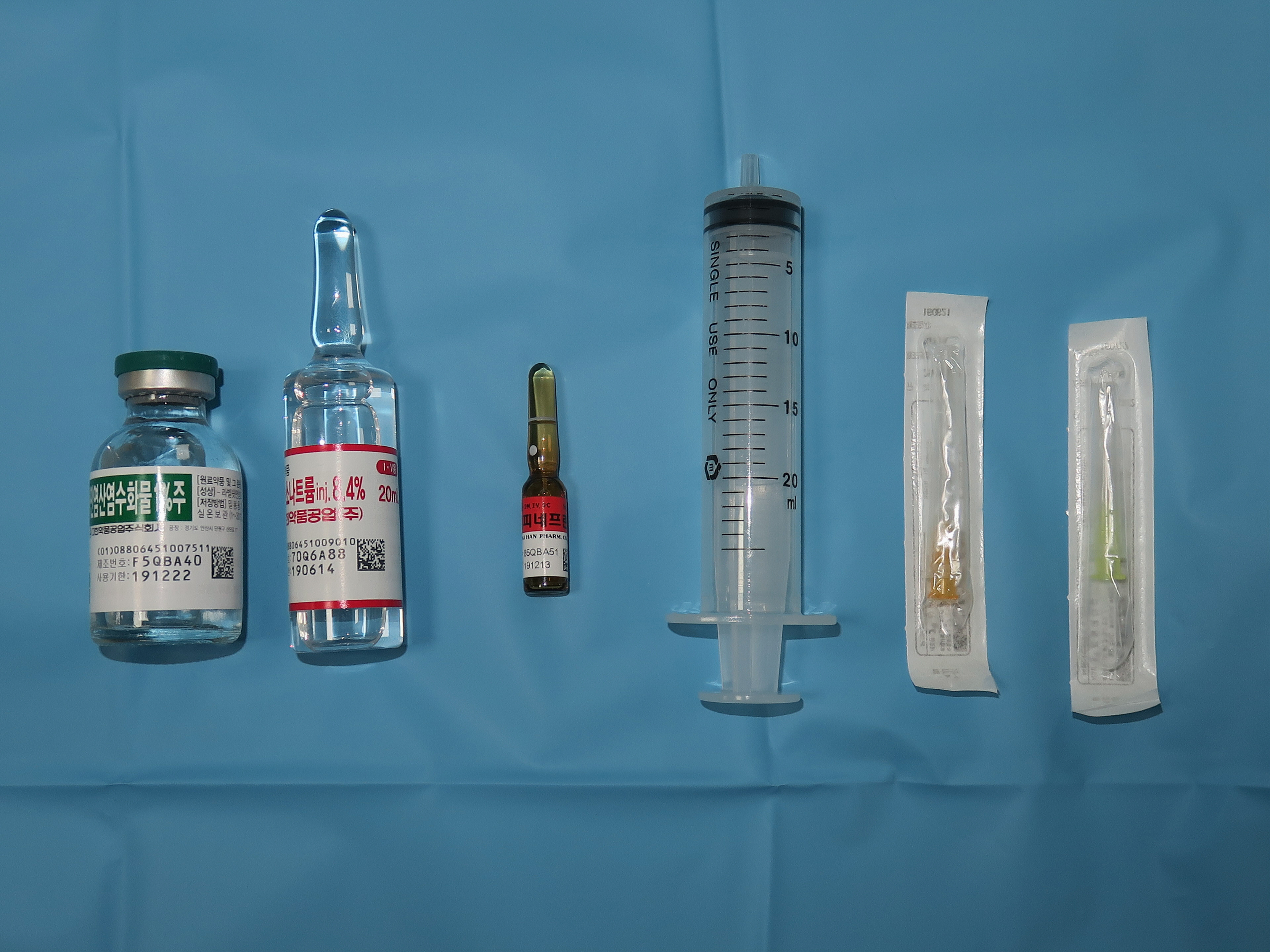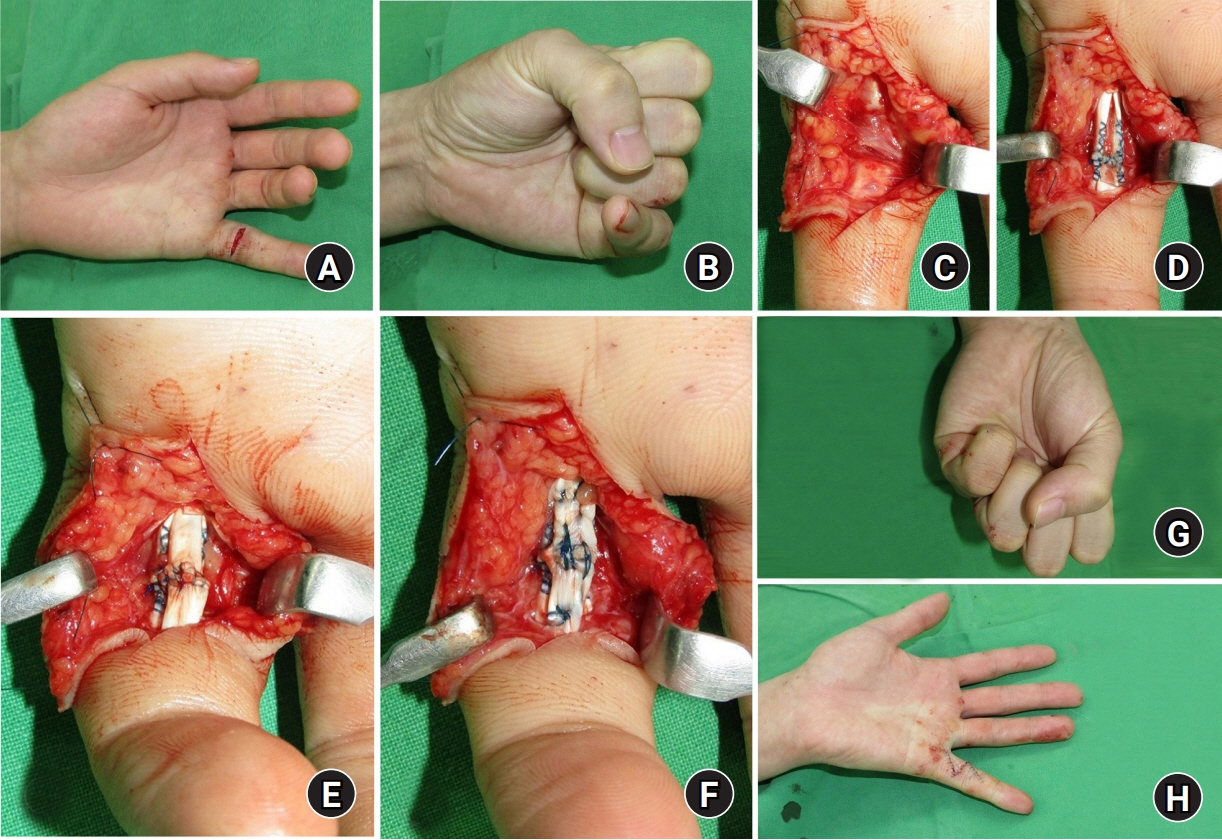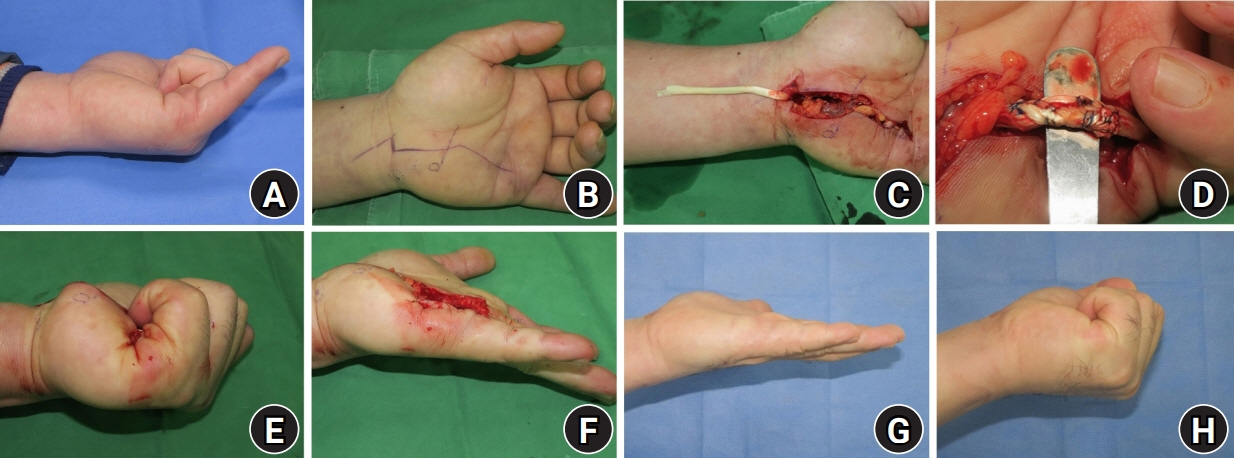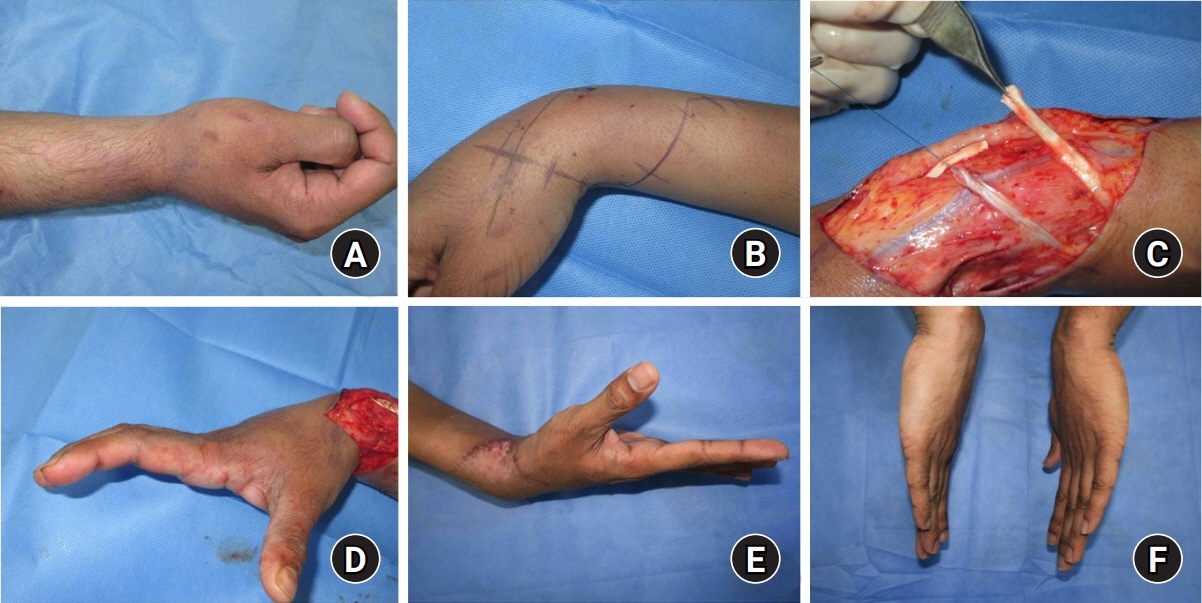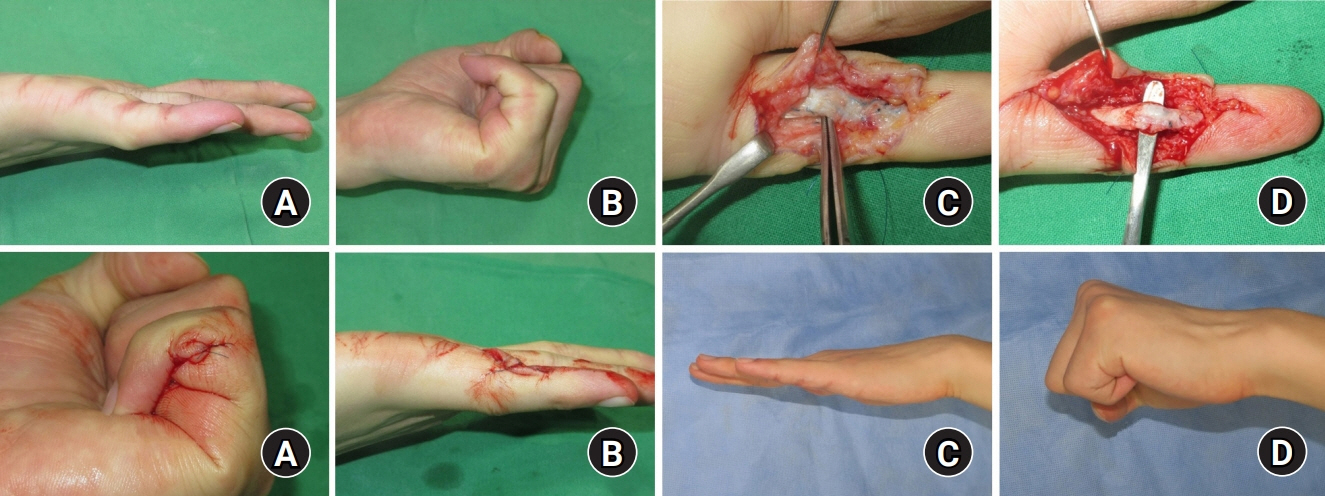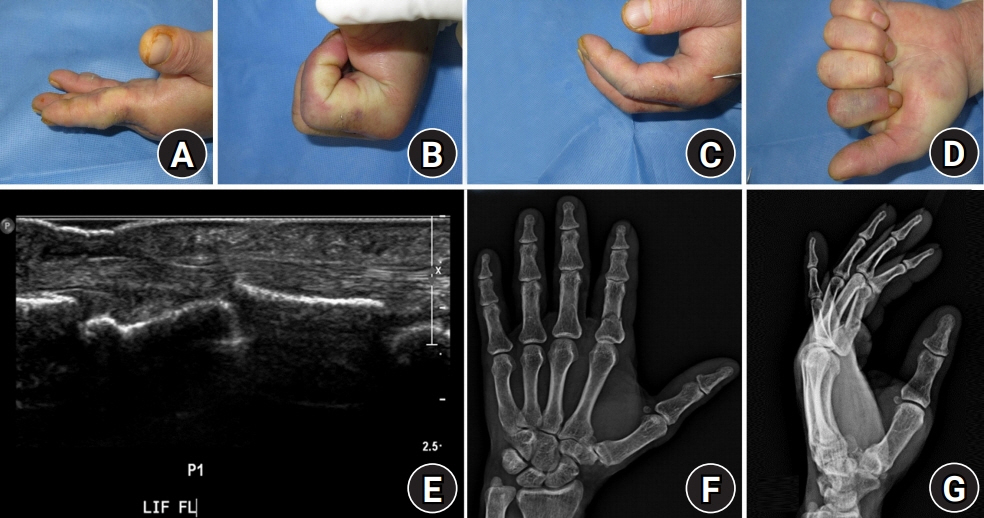Arch Hand Microsurg.
2021 Mar;26(1):1-11. 10.12790/ahm.20.0073.
Wide-Awake Hand surgery
- Affiliations
-
- 1W Institute for Hand & Reconstructive Microsurgery, W General Hospital, Daegu, Korea
- KMID: 2513200
- DOI: http://doi.org/10.12790/ahm.20.0073
Abstract
- Wide-awake surgery is a surgical procedure which is not used a tourniquet and any sedation by using the function of lidocaine and epinephrine through the tumescent injection technique. The biggest advantages of wide-awake surgery are the prevention of the systemic risk of general anesthesia and the surgeon can confirm the result of surgery by moving the patient’s joint and tendon during the operation. But some modification of wide-awake surgery may be beneficial for the surgeon and patient. For decreasing the patient anxiety, low-grade sedative can be used and short-time use of tourniquet during initial dissection of the operating site can prevent the unexpected complication.
Keyword
Figure
Reference
-
1. Lalonde D, Eaton C, Amadio P, Jupiter J. Wide-awake hand and wrist surgery: a new horizon in outpatient surgery. Instr Course Lect. 2015; 64:249–59.2. Lalonde D, Martin A. Epinephrine in local anesthesia in finger and hand surgery: the case for wide-awake anesthesia. J Am Acad Orthop Surg. 2013; 21:443–7.
Article3. Bezuhly M, Sparkes GL, Higgins A, Neumeister MW, Lalonde DH. Immediate thumb extension following extensor indicis proprius-to-extensor pollicis longus tendon transfer using the wide-awake approach. Plast Reconstr Surg. 2007; 119:1507–12.
Article4. Higgins A, Lalonde DH, Bell M, McKee D, Lalonde JF. Avoiding flexor tendon repair rupture with intraoperative total active movement examination. Plast Reconstr Surg. 2010; 126:941–5.
Article5. Khor WS, Langer MF, Wong R, Zhou R, Peck F, Wong JK. Improving outcomes in tendon repair: a critical look at the evidence for flexor tendon repair and rehabilitation. Plast Reconstr Surg. 2016; 138:1045e–1058e.6. Gregory S, Lalonde DH, Fung Leung LT. Minimally invasive finger fracture management: wide-awake closed reduction, K-wire fixation, and early protected movement. Hand Clin. 2014; 30:7–15.7. Hagert E, Lalonde DH. Wide-awake wrist arthroscopy and open TFCC repair. J Wrist Surg. 2012; 1:55–60.
Article8. Lalonde DH. Latest advances in wide awake hand surgery. Hand Clin. 2019; 35:1–6.
Article9. Wong J, Lin CH, Chang NJ, Chen HC, Lin YT, Hsu CC. Digital revascularization and replantation using the wide-awake hand surgery technique. J Hand Surg Eur Vol. 2017; 42:621–5.
Article10. MacNeill AL, Mayich DJ. Wide-awake foot and ankle surgery: a retrospective analysis. Foot Ankle Surg. 2017; 23:307–10.
Article11. Mackley CL, Marks JG Jr, Anderson BE. Delayed-type hypersensitivity to lidocaine. Arch Dermatol. 2003; 139:343–6.
Article12. Carazo JL, Morera BS, Colom LP, Gálvez Lozano JM. Allergic contact dermatitis from ethyl chloride and benzocaine. Dermatitis. 2009; 20:E13–5.13. Kennedy KS, Cave RH. Anaphylactic reaction to lidocaine. Arch Otolaryngol Head Neck Surg. 1986; 112:671–3.
Article14. Klein JA. Tumescent technique for regional anesthesia permits lidocaine doses of 35 mg/kg for liposuction. J Dermatol Surg Oncol. 1990; 16:248–63.
Article15. Strazar AR, Leynes PG, Lalonde DH. Minimizing the pain of local anesthesia injection. Plast Reconstr Surg. 2013; 132:675–84.
Article16. Kang SW, Kim YW, Park JK. Wide-awake hand surgery. Arch Hand Microsurg. 2018; 23:1–11.
Article17. Arendt-Nielsen L, Egekvist H, Bjerring P. Pain following controlled cutaneous insertion of needles with different diameters. Somatosens Mot Res. 2006; 23:37–43.
Article18. Farhangkhoee H, Lalonde J, Lalonde DH. Wide-awake trapeziectomy: video detailing local anesthetic injection and surgery. Hand (N Y). 2011; 6:466–7.
Article19. Frank SG, Lalonde DH. How acidic is the lidocaine we are injecting, and how much bicarbonate should we add? Can J Plast Surg. 2012; 20:71–3.
Article20. Chowdhry S, Seidenstricker L, Cooney DS, Hazani R, Wilhelmi BJ. Do not use epinephrine in digital blocks: myth or truth? Part II. A retrospective review of 1111 cases. Plast Reconstr Surg. 2010; 126:2031–4.
Article21. Thomson CJ, Lalonde DH, Denkler KA, Feicht AJ. A critical look at the evidence for and against elective epinephrine use in the finger. Plast Reconstr Surg. 2007; 119:260–6.
Article22. Zhang JX, Gray J, Lalonde DH, Carr N. Digital necrosis after lidocaine and epinephrine injection in the flexor tendon sheath without phentolamine rescue. J Hand Surg Am. 2017; 42:e119–23.
Article23. Nodwell T, Lalonde D. How long does it take phentolamine to reverse adrenaline-induced vasoconstriction in the finger and hand?: a prospective, randomized, blinded study: the Dalhousie project experimental phase. Can J Plast Surg. 2003; 11:187–90.
Article24. McKee DE, Lalonde DH, Thoma A, Glennie DL, Hayward JE. Optimal time delay between epinephrine injection and incision to minimize bleeding. Plast Reconstr Surg. 2013; 131:811–4.
Article25. Tang JB. Wide-awake primary flexor tendon repair, tenolysis, and tendon transfer. Clin Orthop Surg. 2015; 7:275–81.
Article26. Gao LL, Chang J. Wide awake secondary tendon reconstruction. Hand Clin. 2019; 35:35–41.
Article27. Lalonde DH. Wide-awake extensor indicis proprius to extensor pollicis longus tendon transfer. J Hand Surg Am. 2014; 39:2297–9.
Article28. Woo SH, Yoo MJ, Ahn HC. Lessons learned in the authors’ first years of wide-awake hand surgery at the W hospital in Korea. Hand Clin. 2019; 35:59–66.
Article29. Diao E, Eaton RG. Total collateral ligament excision for contractures of the proximal interphalangeal joint. J Hand Surg Am. 1993; 18:395–402.
Article30. Das De S, Vranceanu AM, Ring DC. Contribution of kinesophobia and catastrophic thinking to upper-extremity-specific disability. J Bone Joint Surg Am. 2013; 95:76–81.31. Lied L, Borchgrevink GE, Finsen V. Wide awake hand surgery. J Hand Surg Asian Pac Vol. 2017; 22:292–6.
Article32. Teo I, Lam W, Muthayya P, Steele K, Alexander S, Miller G. Patients’ perspective of wide-awake hand surgery: 100 consecutive cases. J Hand Surg Eur Vol. 2013; 38:992–9.33. Odinsson A, Finsen V. The position of the tourniquet on the upper limb. J Bone Joint Surg Br. 2002; 84:202–4.
Article34. Nakanishi Y, Omokawa S, Kobata Y, et al. Ultrasound-guided selective sensory nerve block for wide-awake forearm tendon reconstruction. Plast Reconstr Surg Glob Open. 2015; 3:e392.
Article
- Full Text Links
- Actions
-
Cited
- CITED
-
- Close
- Share
- Similar articles
-
- Wide-Awake Hand Surgery
- Tumescent Local Anesthesia for Hand Surgery: Improved Results, Cost Effectiveness, and Wide-Awake Patient Satisfaction
- Wide Awake Hand Surgery
- Wide Awake Local Anesthesia No Tourniquet Technique for Extensor Indicis Proprius Tendon Transfer
- Anesthetic considerations for awake craniotomy

